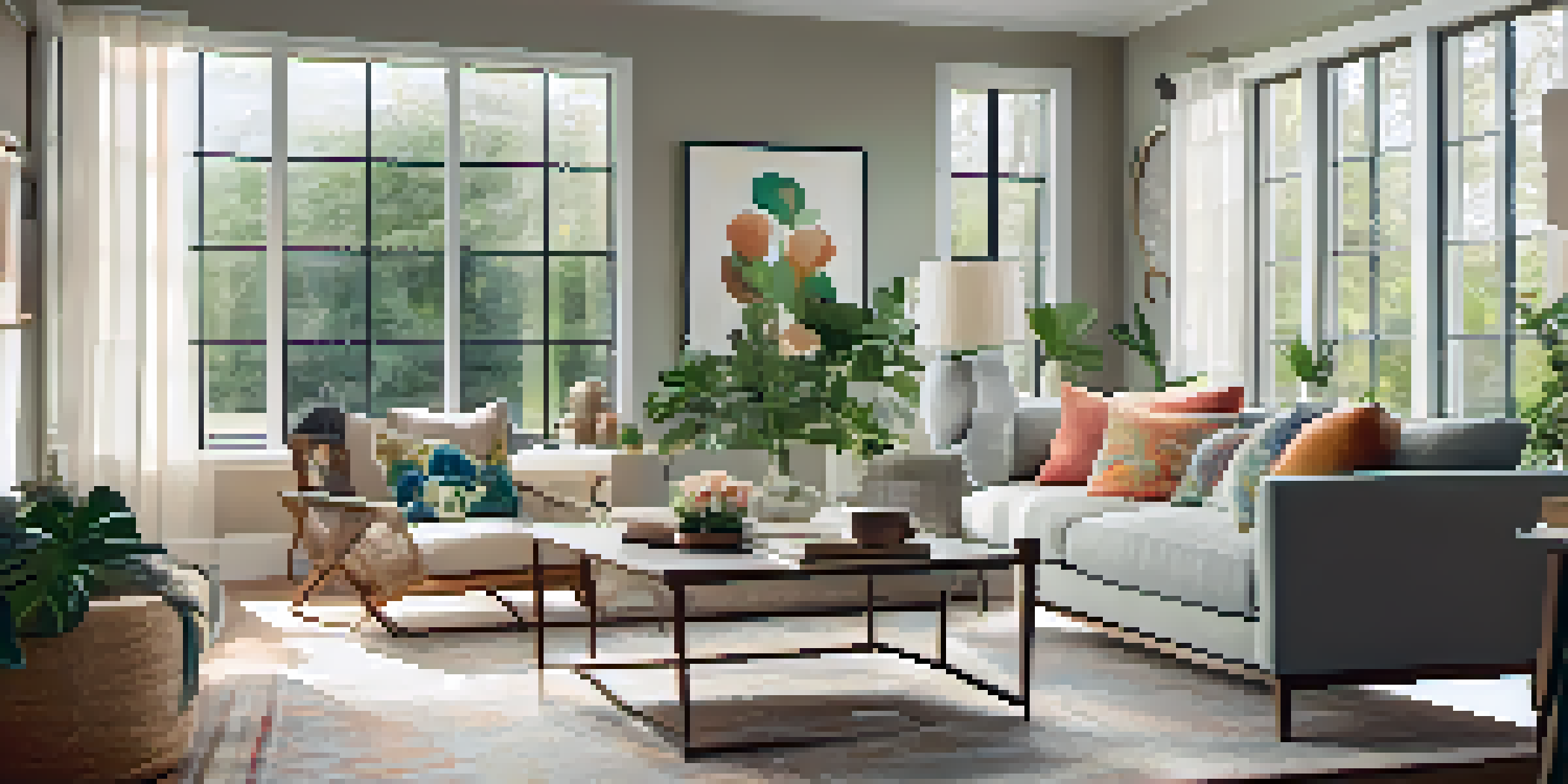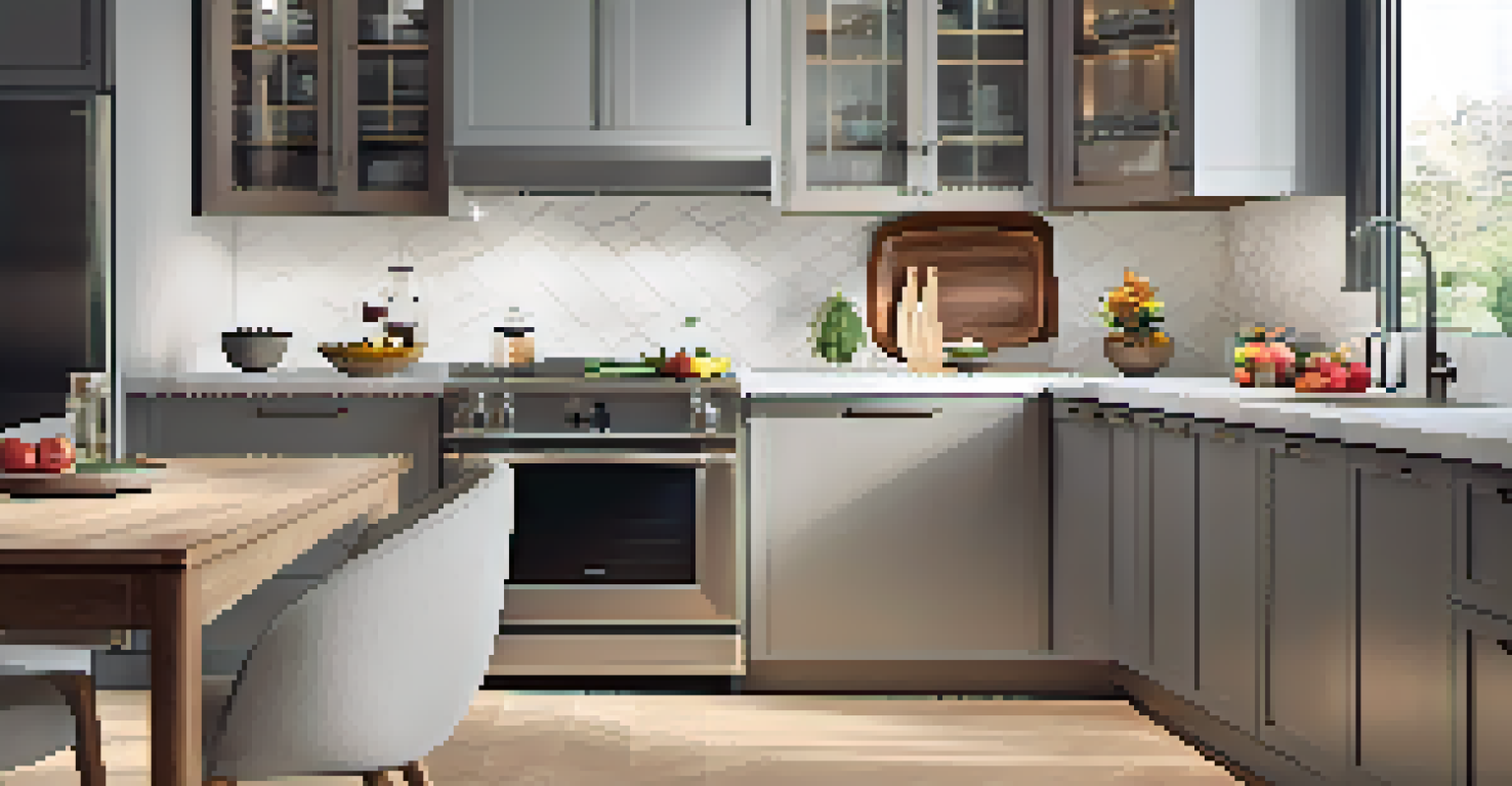Maximizing Home Staging ROI: Tips for Budget-Conscious Sellers

Understand the Basics of Home Staging
Home staging is the process of preparing your home for sale by making it visually appealing to potential buyers. This can involve decluttering, rearranging furniture, and adding tasteful decor. The goal is to create an inviting atmosphere that helps buyers envision themselves living in the space.
Home staging is not just about making your home look pretty; it's about creating an environment that allows buyers to envision their future there.
By understanding the basics, sellers can make informed decisions about what changes to implement. For example, a fresh coat of paint in neutral tones can breathe new life into a room without breaking the bank. It's all about highlighting the home’s strengths and minimizing any flaws.
In essence, effective home staging is about showcasing the best features of your property while keeping costs manageable. By focusing on the fundamentals, you set the stage for a successful sale.
Declutter and Depersonalize Your Space
One of the most impactful things you can do when staging your home is to declutter and depersonalize. This means removing excess furniture, personal photos, and other items that can distract buyers. A clean, uncluttered space allows potential buyers to see the home’s true potential.

Think of it like preparing for a big presentation; you wouldn’t want unnecessary distractions to take away from your message. By clearing out personal items, you create a neutral environment that helps buyers imagine their own lives in the space.
Declutter for a Neutral Space
Removing personal items and excess furniture helps buyers envision themselves in your home.
Moreover, decluttering can also give the illusion of more space, making your home feel larger and more inviting. Remember, less is often more when it comes to staging!
Focus on Key Areas: Living Room and Kitchen
When buyers walk through your home, certain areas will catch their eye more than others. The living room and kitchen are often seen as central gathering spaces, making them crucial to focus on during staging. These areas should feel warm and welcoming, encouraging buyers to envision themselves entertaining family and friends.
You never get a second chance to make a first impression.
Consider rearranging furniture to create an open flow in the living room, and ensure the kitchen is spotless. Simple updates, like new cabinet knobs or a stylish backsplash, can make a significant impact without a hefty price tag.
By prioritizing these key areas, you can maximize your home’s appeal and potentially increase your return on investment. After all, first impressions matter in real estate!
Use Cost-Effective Decor Solutions
Decorating doesn’t have to be expensive to be effective. There are plenty of cost-effective solutions that can add charm and character to your home. For instance, using fresh flowers, strategically placed artwork, or even a few well-placed throw pillows can create a warm and inviting atmosphere.
Think of it as setting the stage for a play; the right decor can help convey the desired mood. Shopping at thrift stores or online marketplaces can yield unique finds that enhance your home’s appeal without draining your wallet.
Enhance Key Areas for Appeal
Focusing on the living room and kitchen can significantly increase a home's attractiveness to potential buyers.
Ultimately, thoughtful decor choices can make your home feel both stylish and inviting. This approach not only enhances the staging but also keeps your budget intact.
Enhance Curb Appeal for a Strong First Impression
Curb appeal is the first impression buyers get of your home, and it can significantly impact their perception. Simple enhancements like mowing the lawn, trimming hedges, and adding colorful flowers can go a long way. After all, it’s the first thing potential buyers will see, so make it count!
Consider adding a fresh coat of paint to your front door or updating house numbers for an inviting touch. Even small changes can create a welcoming entrance that draws buyers in.
Investing a little time and effort into your home’s exterior can yield significant returns when it comes to buyer interest. Remember, you want them to feel excited about stepping inside!
Leverage Natural Light to Brighten Spaces
Natural light can transform a space, making it feel larger and more inviting. When staging your home, consider ways to maximize this valuable resource. Open curtains and blinds to let sunlight flood in, and consider strategically placing mirrors to reflect light and create an illusion of more space.
Think of natural light as your home’s secret weapon; it enhances the ambiance and showcases your property’s best features. You might also consider adding soft lighting fixtures for an inviting glow during evening showings.
Maximize Natural Light
Utilizing natural light makes your home feel larger and more inviting, enhancing its overall appeal.
By prioritizing natural light, you can create an airy atmosphere that appeals to buyers. It’s a simple yet effective way to elevate your home’s staging game.
Consider Professional Staging on a Budget
If you're feeling overwhelmed, hiring a professional stager can be a great investment. Many stagers offer flexible packages that cater to various budgets, allowing you to choose the level of service that fits your needs. They can provide expert advice on what works best for your specific home and market.
Think of a professional stager as a director for your home; they know how to highlight your property’s strengths while minimizing any weaknesses. Their experience can save you time and help you avoid costly mistakes.

Even if you opt for a consultation instead of full staging, the insights gained can significantly enhance your home’s appeal. It’s an investment that could pay off when it comes time to sell.
Timing Your Staging for Maximum Impact
Finally, timing is everything when it comes to staging your home. The best time to stage your property is often right before listing it, as this ensures it looks its best for showings. If you can time your staging to coincide with peak selling seasons, you may attract more potential buyers.
Consider local market trends and seasonal factors; for example, spring and early summer are typically ideal for home sales. Timing your staging efforts to align with these trends can help maximize your return on investment.
Declutter for a Fresh Perspective
Removing personal items and excess furniture creates a neutral space that allows buyers to envision their own lives in your home.
By being strategic about when you stage your home, you can create a sense of urgency and excitement among buyers, ultimately leading to a successful sale.